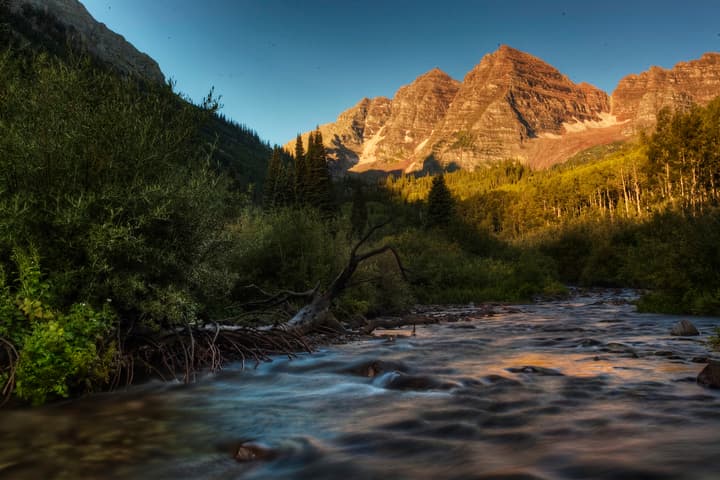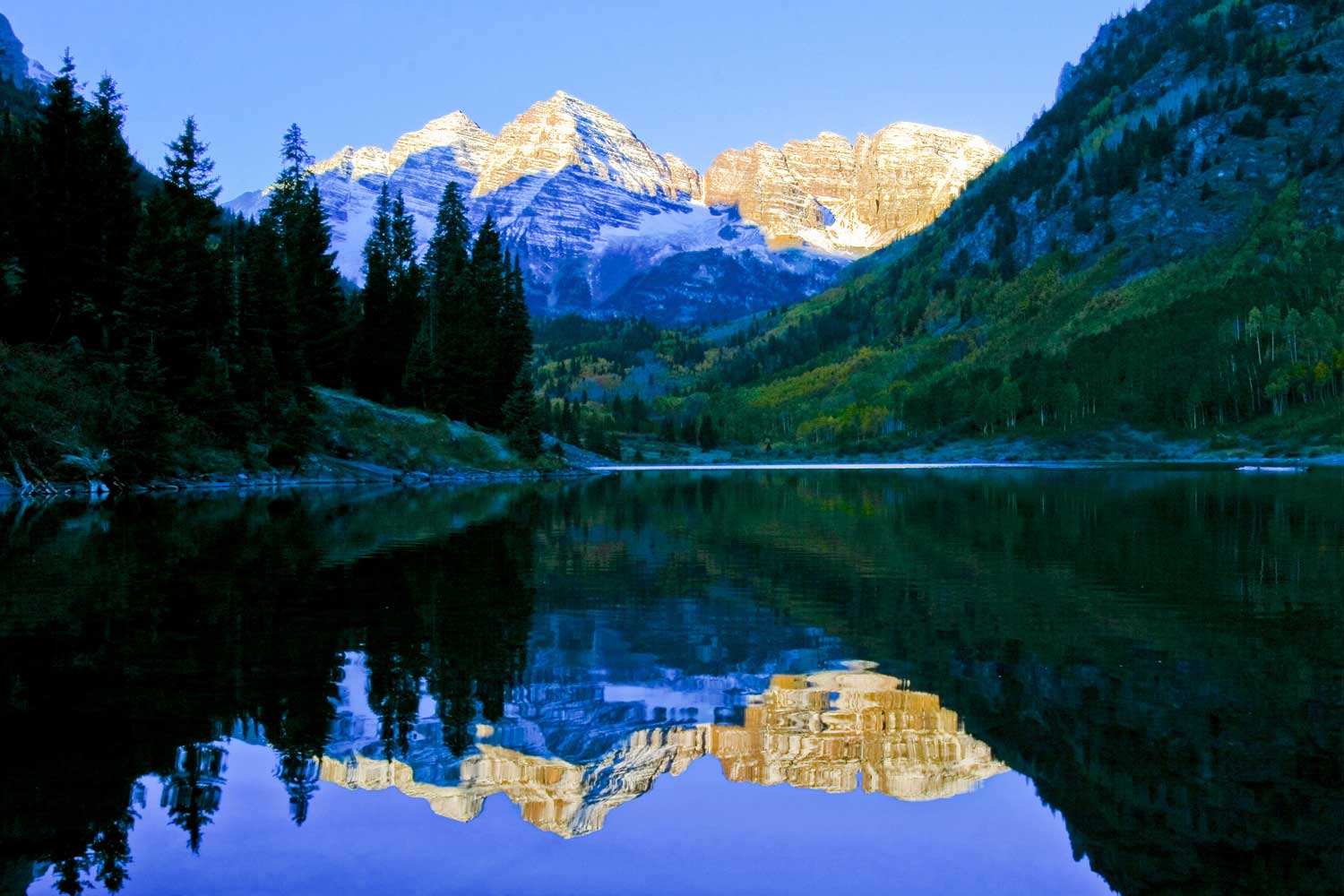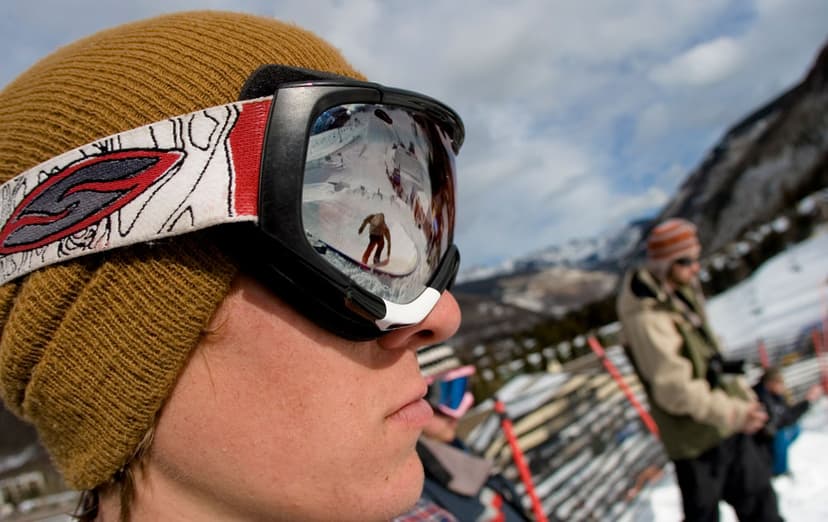If the views of this beautiful valley look familiar, it’s likely because the Maroon Bells are the most photographed mountains in America — and for good reason.
Located just 10 miles west of Aspen or 16 from Snowmass in a glacial valley, the 14,000-foot bell-shaped peaks (fourteeners) truly capture the beauty of the Rocky Mountains. Anchored by a stunning reflective lake, Maroon Peak and North Maroon Peak tower over the area, creating an oasis of natural wonder that captivates visitors of this unique destination year-round.
More than 300 million years of geologic activity, including sedimentation, uplift and erosion by wind, water and ice, are credited to the creation of Maroon Valley. And according to the U.S. Forest Service, the mountains received their distinctive maroon coloring from the weathering of hematite, an iron-bearing mineral, while Maroon Lake occupies a basin that was sculpted by Ice Age glaciers.
Now, hiking trails provide access to plenty of these photo-worthy scenes in the White River National Forest, including hypnotizing fields of wildflowers and anglers seeking catches in tranquil Maroon Lake. Fall colors make it an especially dreamy time to visit, when the Maroon Bells are cradled by cloud-speckled blue skies and golden aspen groves. No matter the season, beauty abounds at the Maroon Bells, which is why it’s become a bucket list destination for so many.
Getting to the Maroon Bells
Because the natural landmark is so popular, there is limited access to the area during the summer and fall. Walk-ups are always welcome, but reservations are recommended to visit the Maroon Bells Scenic Area by car or shuttle.
The best way to see the Maroon Bells is to take the public bus operated by the Roaring Fork Transportation Authority (RFTA). Pro tip: Visit mid-week when there's a higher chance you could have the place all to yourself.
The RFTA shuttle service runs between the hours of 8 a.m. and 5 p.m. from late May through late October at a fare of $16 per adult and $10 for children under 12 and seniors. Those who’d rather take their own ride can make reservations to arrive and park at the trailhead outside of these hours at a rate of $10 per vehicle. Note: You must arrive before 8am to park from late May to late October. Reservations for shuttles and trailhead parking open months ahead of time, so book early to make sure you don't miss out. Learn more about Maroon Bells reservations
To access the shuttle, catch the free RFTA shuttle from Rubey Park in downtown Aspen to Aspen Highlands for your ticketed connection to the scenic area. Or, park your car at the Aspen Highlands parking garage for $6 per hour.
Visiting in the Winter
Maroon Creek Road is closed to cars and shuttles in cold-weather months, but you can cross-country ski, snowshoe or snowmobile to the area. T-Lazy-7 Ranch offers a snowmobile tour of the snow-dusted Maroon Bells, which includes the opportunity to cruise miles of groomed trails amid wintery meadows and dense aspen groves.
The Aspen Chamber Resort Association and Snowmass Tourism also have great info on getting there and back.








